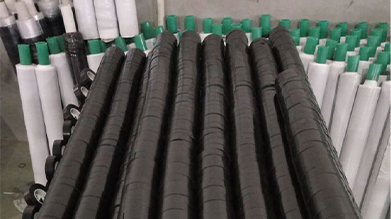The Versatility and Utility of Self-Bonding Electrical Tape
Self-bonding electrical tape, often known as self-fusing or self-vulcanizing tape, is a remarkable innovation in the world of electrical insulation and repairs. Unlike traditional electrical tapes that rely on adhesive for sticking to surfaces, self-bonding tape adheres to itself when stretched and wrapped around objects. This unique property offers a plethora of benefits and diverse applications across various industries.
Understanding Self-Bonding Electrical Tape
Self-bonding tape is typically made from a silicone-based or rubber material that allows it to fuse with itself to form a watertight and airtight seal. When applied, the tape stretches and overlaps, and as it comes into contact with itself, it bonds without the need for any adhesives. This self-bonding characteristic not only enhances the tape’s performance but also ensures that it maintains its integrity even in challenging environments.
Key Features
1. High Temperature Resistance Self-bonding electrical tape can withstand extreme temperatures, making it suitable for use in both high-heat and cold applications. 2. Electrical Insulation It provides excellent electrical insulation properties, crucial for preventing electrical shorts and ensuring safety in electrical systems.
3. Water Resistance The airtight seal produced by self-bonding tape protects against moisture, which is vital for outdoor applications and environments where exposure to water is a concern.
4. Chemical Resistance Many formulations of self-bonding tape resist a wide range of chemicals, including oils and solvents, making it reliable in industrial settings.
5. Durability Its robust nature allows the tape to endure wear and tear, which is essential for applications that require long-lasting repairs and insulation.
Applications
Self-bonding electrical tape has a wide array of applications across multiple sectors, including
- Electrical Repairs Commonly used in electrical wiring repairs, especially in environments where moisture or chemicals may be present
. It effectively seals wires, connectors, and other components, ensuring optimal functioning.self bonding electrical tape

- Automotive Industry In automotive applications, self-bonding tape is used for insulation on wire harnesses, potentially improving the longevity and safety of electronic systems in vehicles.
- Home Repairs Homeowners utilize self-bonding tape for a variety of household repairs, including plumbing fixes, where it can effectively seal leaks or be used to wrap tools and equipment for better grip and insulation.
- Telecommunications Used in protecting signal wires and cables, self-bonding tape is essential for preserving the integrity of communication equipment against environmental factors.
- Craft and DIY Projects It has also gained popularity among DIY enthusiasts for creative projects, such as creating custom grips for tools or waterproofing components.
How to Use Self-Bonding Electrical Tape
Using self-bonding electrical tape is straightforward
1. Clean the Surface Ensure the surface to which the tape will be applied is clean and dry, removing any dust, grease, or debris.
2. Start Wrapping Begin wrapping the tape around the area, stretching it as you apply to create a tight seal. Overlap the tape by approximately half its width as you progress.
3. Seal the End When you finish wrapping, press the end of the tape against the surface to ensure a strong bond.
Conclusion
Self-bonding electrical tape is a versatile solution for anyone in need of reliable insulation and repairs. Its unique self-fusing properties, combined with durability and resistance to environmental factors, make it an essential tool for professionals and DIY enthusiasts alike. As technology advances, this innovative tape will continue to find new applications, solidifying its place as a valuable accessory in both electrical work and various other fields. Whether you’re sealing electrical connections, repairing automotive wiring, or undertaking home improvement projects, self-bonding electrical tape is a practical and effective solution that meets the demands of modern applications.
-
XIANGFAN Rubber Tape-Ultimate Solutions for All Your Insulation NeedsNewsJun.24,2025
-
XIANGFAN Rubber Tape-Protection for Industrial and Residential ApplicationsNewsJun.24,2025
-
XIANGFAN Rubber Tape: Superior Safety and Sealing for Demanding EnvironmentsNewsJun.24,2025
-
XIANGFAN Rubber Tape: Reliable Solutions for Every Electrical ChallengeNewsJun.24,2025
-
XIANGFAN Electrical & Industrial Tape: Powering Reliability Across IndustriesNewsJun.24,2025
-
XIANGFAN Electrical & Industrial Tape: Excellence in Every ApplicationNewsJun.24,2025
